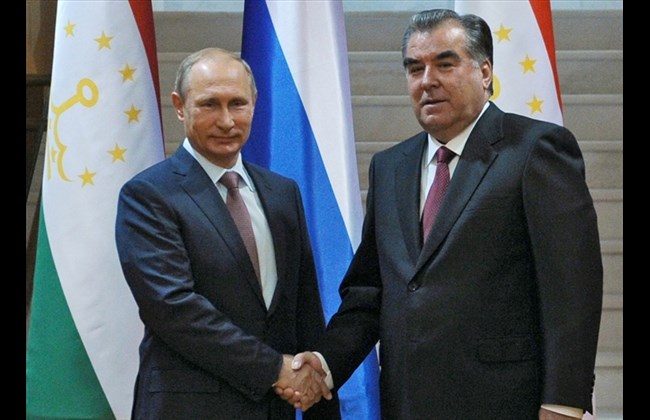In Dushanbe a round-table was held entitled “Integration of Central Asian states in the Eurasian Economic Community (EAEC or EurAsEC): Realities and Prospects”, organized by the mission of the non-profit organization, Development Fund Institute of Eurasian Studies in the Republic of Tajikistan. The event was organized with the support of the Russian Embassy in Tajikistan. This was reported by the news agency “Khovar” on 22nd of November 2016.
The round-table was attended by experts and representatives of the embassies of the member countries of EAEC accredited in Dushanbe, as well as employees of the state agencies, of the non-governmental organizations and the business community.
Comment:
Earlier it was expected that by the end of this year, Tajikistan will apply for entry into the EAEC. Leonid Slutskiy, a deputy of the State Duma of the Russian Federation, made an optimistic statement about this in the early summer: “I think in the coming year Dushanbe declares its desire – Tajikistan is, more than any other CIS country, striving to do this”. However, this has not happened, and Russia has begun actions to encourage Tajikistan’s accession to the EAEC.
Russia has taken the following measures to do this:
- On 21st of November Irina Karimova, chairperson of the Dissertation Council of the Academy of Education, said that the Higher Attestation Commission (HAC) under the Ministry of Education and Science of Russia has suspended the activities of the Scientific Council for doctoral and master’s theses of Tajikistan Academy of Education.
- In Russia in recent weeks there again began mass arrests of migrant workers from Tajikistan. For Russia, this is the traditional leverage in relations with Central Asian countries, which should be induced to this or that Russian economic and political projects.
Recall that the creation of the EAEC was initiated by Russia to maintain and strengthen its influence in the former Soviet Union countries.
The declared goal of the EAEC is to implement the following ideas:
- The harmonization of legislation.
- The common market – which provides freedom of movement of goods, services, capital and labor.
- Common Customs Tariff.
- Implementation of a coordinated, coherent and unified policy in the sectors of the economy.
This is the official purpose of the EAEC.
And the true motives pushed Russia to the establishment of this alliance are:
- Russia, after Putin came to power, has taken measures for the return of the post-Soviet countries in its orbit of influence. For that, it concluded several different types of agreements such as the CSTO, SCO, EAEC, etc, with these countries. Russia succeeded in this with respect to some countries, but failed with other countries, such as, for example, Ukraine. The recent events in the South-East of Ukraine show what Russia can do to maintain its influence. And all of this – is nothing but a rivalry between the US and Russia for influence in the post-Soviet space. After all, the US is trying to deter and weaken the influence of Russia in the region. The allocation of 952 million dollars from the US federal budget to the State Department for 2017 on “countering Russian aggression” including in the countries of Central Asia testifies to this fact, it was reported on the website of the US State Department on 09.02.2016. For this reason, the Kremlin, for its part, began to strengthen its geopolitical position in these countries by concluding new alliances or by upgrading the existing ones.
- Russia is a raw materials state, but not industrial. Russia inherited many of the existing production facilities from the Soviet Union, and they need to be modernized. Today, Russia is unable to produce competitive products. It lags behind in almost all sectors: automotive industry, which practically does not meet modern requirements, construction equipment, consumer electronics, pharmaceuticals, food, etc. That’s how it was declared by German Gref, a head of Sberbank, speaking at Gajdar forum in RANHiGS: “We lost the competition and ended up in the camp of countries that lose, downshifting countries”. Thus, the former USSR countries, when establishing such a union, are a favorable export market, where Russia can sell uncompetitive goods of its own.
Besides all this, Central Asia is a kind of a buffer zone of political and military threats for Russia, and because of this Russia is trying to make the Central Asian countries completely dependent states by all available means.
Based on the foregoing, it is clear that this union represents only the interests of Russia, and it is not a mutually beneficial partnership for the Central Asia countries.
As long as the Turkestan lands are under the control of the rulers-traitors who sold themselves to the enemies of Islam and Muslims, this situation will remain unchanged for Muslims. Moreover, Islam prohibits the conclusion of such agreements and alliances with the disbelieving states, especially in their favor and against the interests of Muslims. Only the return to the laws of Islam applied in life, society and the state will be able to solve all the current problems and misfortunes befell the Muslims of Tajikistan. It is the economic system of Islam that provides for the equitable distribution of wealth, it is the Islamic system of government that solves all the problems of corruption, protects our honor and property. And only with this system Allah will be pleased!
Firdavs Salimzoda

